Today, on the BWL Author Blog, I write about my book club discussion of Rebecca by Daphne du Maurier. https://bwlauthors.blogspot.com/
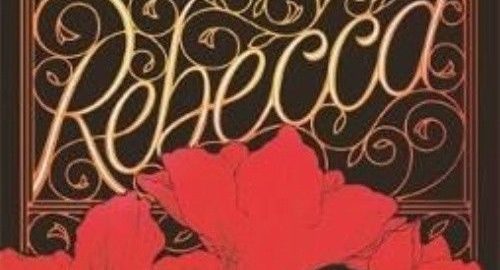

Today, on the BWL Author Blog, I write about my book club discussion of Rebecca by Daphne du Maurier. https://bwlauthors.blogspot.com/
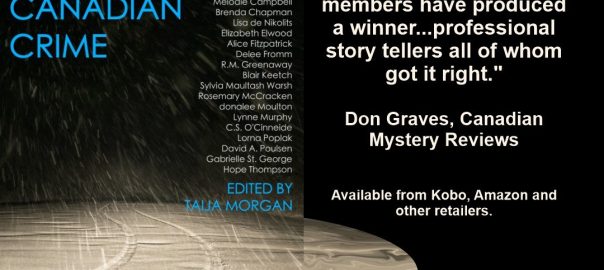
Cold Canadian Crime
[From gritty noir to dark humour, 21 short stories from Canadian Crime writers perfect for curling up with on a chilly winter night.
“Crime Writers of Canada members have produced a winner…professional story tellers all of whom got it right. “
Don Graves, Canadian Mystery Reviews
Available from :
https://www.kobo.com/ca/en/ebook/cold-canadian-crime https://www.amazon.ca/dp/B09ZBF2YV9
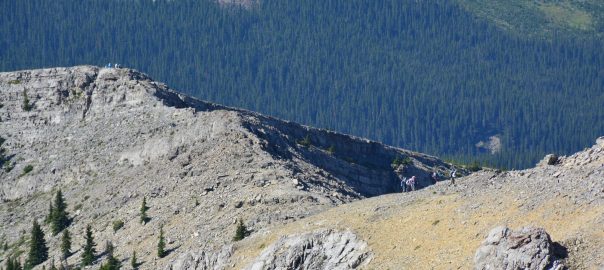
Some years ago, I read an award-winning novel about intergenerational family relationships. Every character in the story over age fifty was physically or mentally decrepit, and often both. The author was in her thirties. This was a comic novel and I realized she was exaggerating the characters for laughs. As an official senior citizen, I didn’t find it funny.
Physical and mental problems do tend to creep in with age. Aching joints, dementia, type two diabetes, high blood pressure, clogged arteries, and a host of cancers strike seniors in large numbers. I know several seventy-year-olds who have broken bones from a simple fall. In their youths, they’d have escaped with a scratch, which healed quickly. I find recovery from injuries and medical procedures takes longer now and my body parts don’t always return to their former normal. “You’re only as old as you feel” would be nice, but it isn’t quite true. Portraying seniors as no different from fit twenty-somethings only works in science fiction and fantasy — my fantasy, in particular.
But I also have many friends over age seventy-five who regularly spend full days hiking up steep hills, over rocky and rooted terrain. And don’t try to put something over on my ninety-year-old uncle. He’s as sharp as most people decades younger, although he needs a wheelchair.
I think one trick for writing realistic older people is balance. For each character brought down by the trials of advanced age, show another senior in peak form. I wouldn’t have minded that award-winning humour novel as much if one character over fifty, and preferably over seventy or eighty or ninety, climbed a mountain, clobbered a skilled opponent in chess, or published a successful humour book.
It’s not easy to avoid ageism in writing. A friend, who is a few years older than I am, once admonished me for having a character in her mid-fifties struggle to rise from sitting on the floor. I’d thought this was realistic, since most people in my seniors’ gym class hoist themselves up awkwardly from the mats. Kudos to my friend for being able to leap to her feet.
Look closely at the photo at the top of this post to see a group of seniors hiking. They’re specs on the landscape.
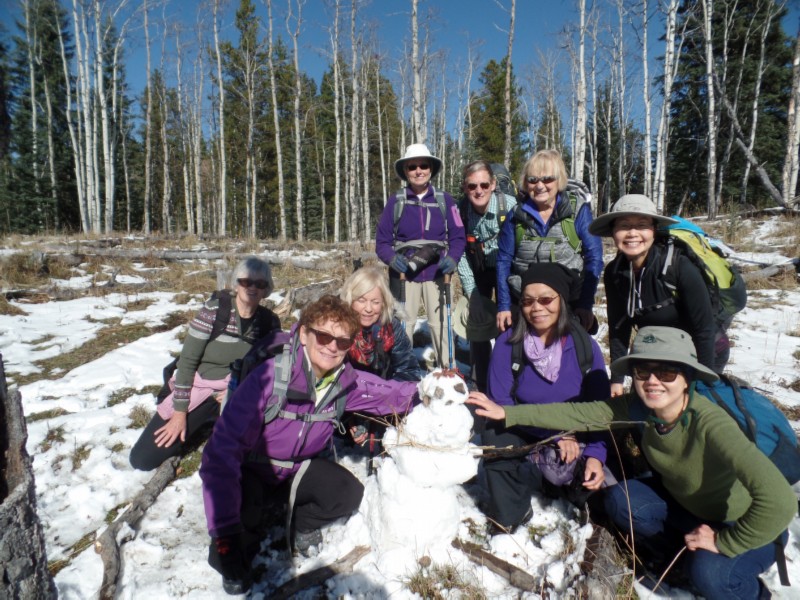
Today, on the BWL Author blog, I rant a little about how some authors portray older characters in novels. https://bwlauthors.blogspot.com/

Yesterday I flew home from a trip to Minneapolis. On November 12th I leave for a three-week holiday in Mexico. This gives me a two-month window to write draft # 3 of my novel-in-progress. I have to complete this work to make the deadline for the novel’s scheduled release in September 2023.
It’s a challenge for me to think of my writing as work, since I don’t come close to making a living from it. But I have to do this in order to finish a long project like a novel. Otherwise I’ll let other activities completely consume my time. I wrapped up the first draft of this novel in late May and have given the book little thought since then. A break of almost four months should be good for returning to the story with fresh eyes. I don’t regret my travels to Ireland and Ontario and warm summer days spent hiking, biking and hanging out with family and friends, when I could have been writing.

While it’s hard to drag myself back to the computer, I know from numerous past experiences that once I start I’ll soon be into the writing groove again. This helps me avoid procrastination and plunge in, as I would into cold water. Once I’m swimming in the story, I’ll need to avoid distractions and limit them to important matters like family, friends, exercise, and volunteer work. Turning off my instant email notification will be essential. I’ve taken on a commitment to co-chair Calgary’s committee to host the Bouchercon mystery convention in 2026. It will be tempting to get sidetracked into concrete organizing tasks that can feel easier than pulling characters out of the air and resolving plot glitches.
I did use my summer time for some research relevant to the novel. The first draft unexpectedly veered into areas outside my knowledge zone. One of these was the opioid crisis. Drug dealer killings appear frequently in current mystery novels, but I’d thought the subject wouldn’t interest me. I prefer to write about ordinary people who kill for personal, social, or psychological reasons; people who might be me or a friend driven by a particular situation. But people like this are the drug dealers in my novel-in-progress. They operate a low-key business out of a bicycle store. During the summer, I read two excellent books on Canada’s opioid crisis and now feel capable of handling the topic in a novel.

This new book also gets more into police work than the first three novels in my Paula Savard Mystery Series because I made two police officers point of view narrators. This fall I hope to fit in a research visit to Calgary police headquarters and will look for a beta reader or consultant knowledgeable in police work, without letting this research distract me from writing.
For my last two novels, I discovered a useful trick – those mornings that I wake up early, rather than lie in bed drifting in and out of consciousness, I force myself up, make coffee, turn on my computer, and write while the sun rises outside my window. I’m amazed by how much I can accomplish before the day’s usual activities get started.
In short, I find the key to writing novels is to treat them like work. Don’t wait for mood and inspiration. Grab your time at your writing desk, sit down, and do it.

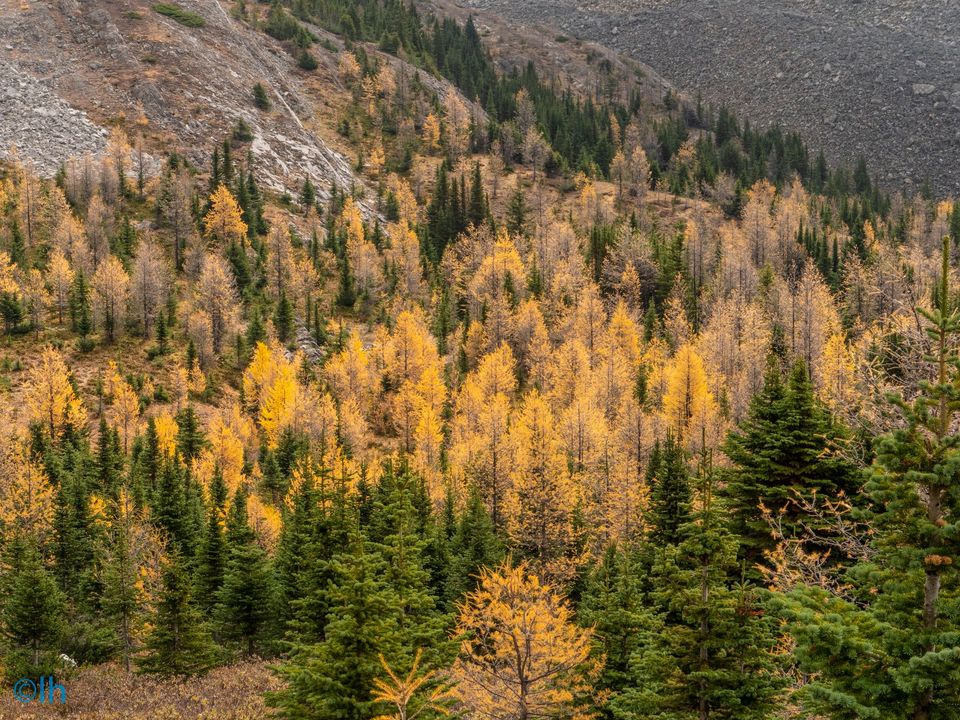
Today on the BWL website I blog about my fall writing plans. https://bwlauthors.blogspot.com/

My publisher BWL was awarded funding under their CBF Accessible Audiobook application to produce a group of audiobooks. They’ve chosen my novel, Ten Days in Summer, to be one of the books. This is exciting new territory for my Paula Savard Mystery Series. BWL has found a narrator — Janice McNally. She’s from Ontario and has been to the Calgary Stampede, which forms the backdrop for the novel setting. Release is scheduled for early 2023. BWL says Janice’s voice sounds great. I look forward to hearing her 15 minute demo recording.

Irish writers were hot in in the 1960s and 70s. My university friends and I read Joyce, Yeats, and Beckett. My Fair Lady, based on the George Bernard Shaw play Pygmalion, was a hit musical movie. Oscar Wilde was and still is remembered as a larger-than-life character even though he died in 1900. I encountered these authors and more during my visit to Ireland in June.
On our first day in Dublin, my husband Will and I wandered by the colourful statue of Oscar Wilde in Merrion Square.

Monuments near the rock depict Wilde’s numerous witticisms. “Always forgive your enemies: nothing annoys them so much.”
A few blocks away, in St. Stephen’s Green, we met James Joyce.

Jonathan Swift, author of the satire Gulliver’s Travels, was our third Dublin writer that day. Swift served as Dean of St. Patrick’s Cathedral and was known for his controversial opinions. He’s buried in the cathedral along with a woman, Esther Johnson, with whom he shared a mysterious relationship.
Swift in St. Patrick’s Cathedral
The next day, we boarded our tour bus and drove around the island. Our guide mentioned several times that Ireland has four Nobel Prize Winners for Literature, a lot for a small country. They are William Butler Yeats, George Bernard Shaw, Seamus Heaney, and Samuel Beckett, “who wrote the most boring play ever written,” she said about Waiting for Godot. We met Yeats in his home County Sligo on the northwest coast.

I find Yeats’ 1919 poem, The Second Coming, written during the aftermath of WWI, sadly relevant today. “The best lack all conviction, while the worst Are full of passionate intensity.”
At the end of our trip, we returned to Dublin. Will and I went to MoLI (Museum of Literature Ireland), housed in the city’s former Catholic College, which James Joyce attended. Inside there’s a photo of Joyce and his fellow students sitting under this tree that still stands in the back garden.

The museum includes past and present Irish writers, but the focus is James Joyce. A movie and wall panels portray the author’s life.

A 3-d map of Dublin marks locations in Joyce’s short stories and novels.

The first draft of Joyce’s most famous novel, Ulysses, is displayed, showing the author’s colour coding method.

And here’s the first copy of the first edition of Ulysses.

In my youth, I enjoyed Joyce’s first two books, but didn’t tackle Ulysses because everyone said it was inaccessible. After my trip, I skimmed the first fifty pages and can boast that I sometimes understood what was going on. I see on the MoLI website they offer an online book club this summer called Ulysses – for the rest of us! The fortnightly sessions promise to demystify the novel. I’m not quite up to the challenge this summer, but maybe next year.

Today on the BWL website I blog about about my literary tour of Ireland. https://bwlauthors.blogspot.com/

Happy Orangeman’s Day — or not.
July 12th is a holiday in Northern Ireland, commemorating the victory of Protestant William of Orange over Britain’s Catholic King James II at the Battle of the Boyne in 1690. Ulster Protestants celebrate the day with marching band parades; Catholics escape the noise and traffic snarls to beaches in the southern Republic of Ireland.
A month ago, my husband Will and I took a bus tour through Belfast, Northern Ireland. Union Jack Flags, red, white and blue banners, and posters of Queen Elizabeth II decorated homes and businesses in Protestant neighbourhoods in celebration of her majesty’s recent Jubilee weekend. Our tour guide said people would leave the decorations up another month for Orangeman’s Day. The splashy displays ceased abruptly when we crossed into Catholic neighbourhoods.
During The Troubles in Northern Ireland from the late 1960s to late 1990s, Orangeman’s Day was often marked by riots and violence. Protestants would provoke conflict by marching into Catholic neighbourhoods. During that thirty year ‘irregular war’ that killed more than 3,500 people, I wouldn’t have considered a holiday in Belfast, but I didn’t give it a thought this year. We stayed in the Europa Hotel, which experienced 36 bomb attacks during The Troubles and was called the most bombed hotel in the world. Since then, the renovated hotel has gone high tech with ‘smart’ elevators and window blinds.

Our tour bus stopped at the peace wall that divides the predominantly republican, nationalist, Catholic Falls Road area from the loyalist, unionist, Protestant Shankhill Road area of West Belfast. These peace lines are supposed to be removed by 2023, but they’ve become popular tourist attractions. Former IRA members conduct black taxi tours of the walls, complete with their versions of The Troubles and the current political situation. I found this image an unsettling reminder that the conflict isn’t over.

This was brought home to me even more in Londonderry or Derry, depending on your political view. Ireland’s second largest city is located close to the Irish border and is about 75% Catholic (Belfast is roughly 49% Catholic). A local guide gave us a tour of the Derry walls, built in the 1600s as a defense against Catholic attacks. He said that during The Troubles Catholics, who lived largely across the river, weren’t allowed into the city gates. It’s hard to believe this is recent history.


Since the Catholic and Protestant neighbourhoods rise up from the river banks the city’s political divide is visible. Recently there has been some merging. Our guide said he grew up on the boggy Catholic side, but now lives in Protestant (London)Derry. During The Troubles, he knew people who had never ventured to the opposite side of the river. Since 2011, a pedestrian Peace Bridge has connected the two divides. Some suggest the bridge’ s ‘falling-over’ design reflects the shaky peace. Our guide noted that Brexit has refueled the push for a unified Ireland. He pointed out a section of sidewalk damaged by a car bomb, the first since the 1998 Good Friday Agreement that ended The Troubles.

Peace Bridge, Londonderry/Derry